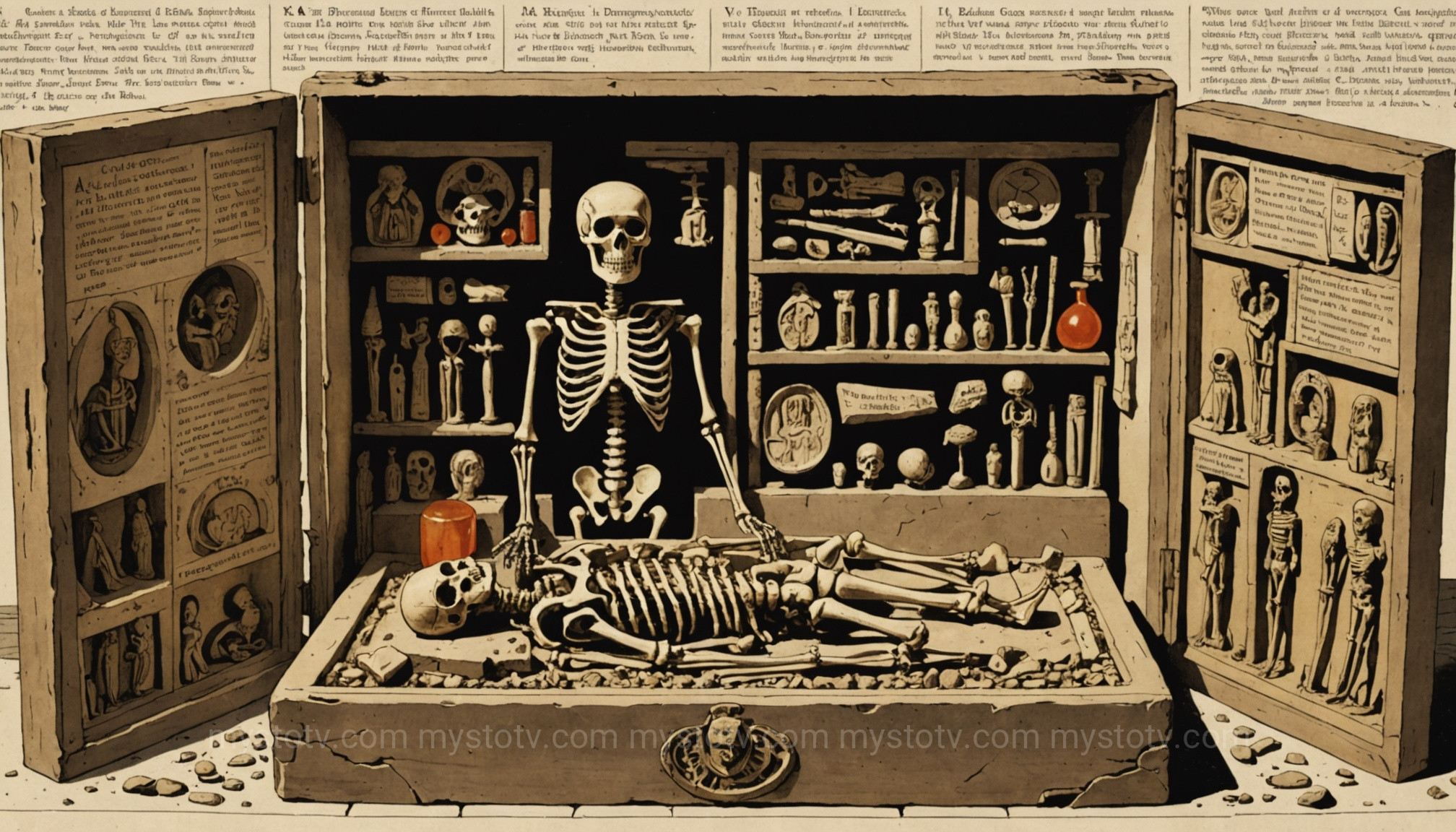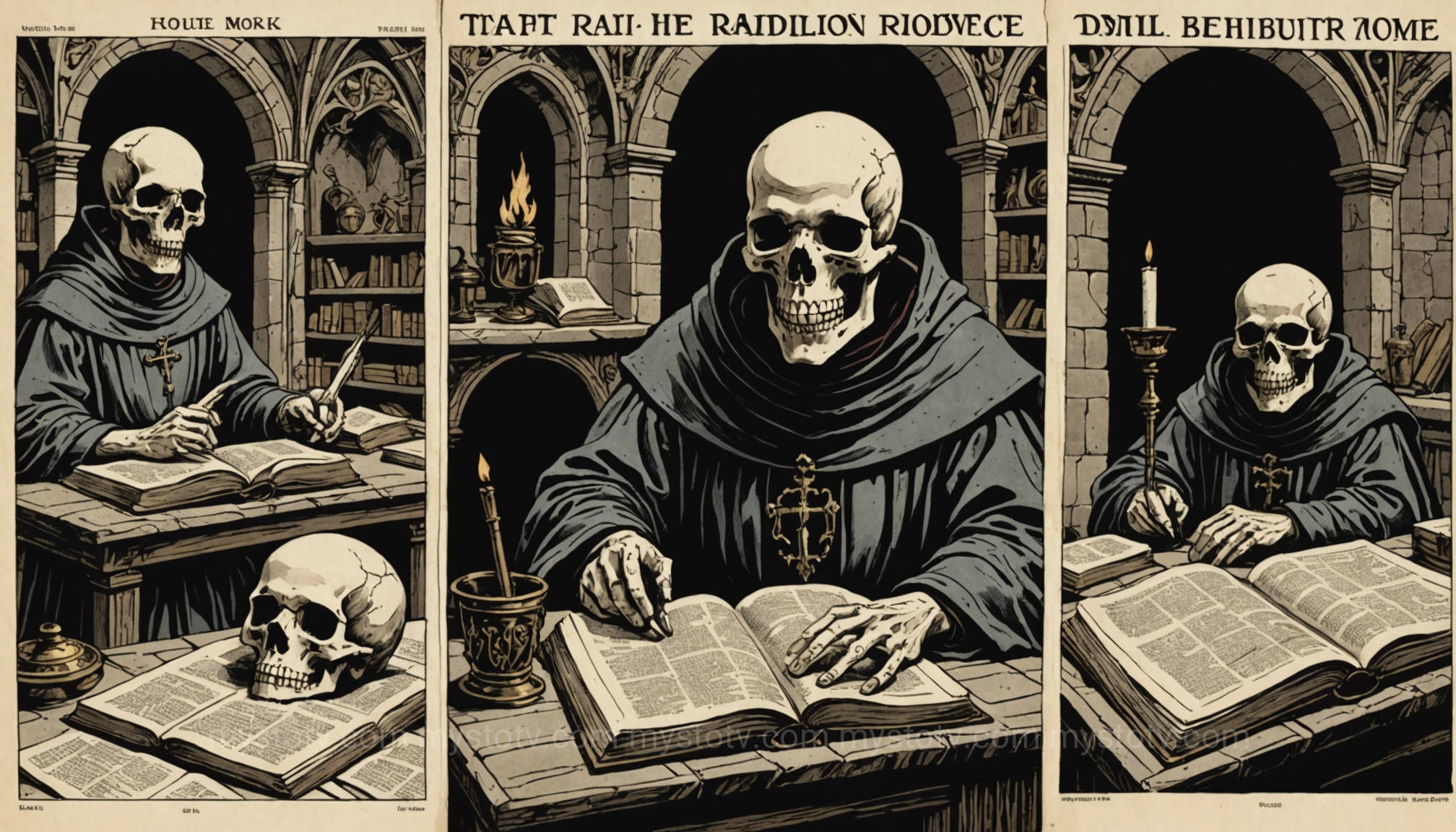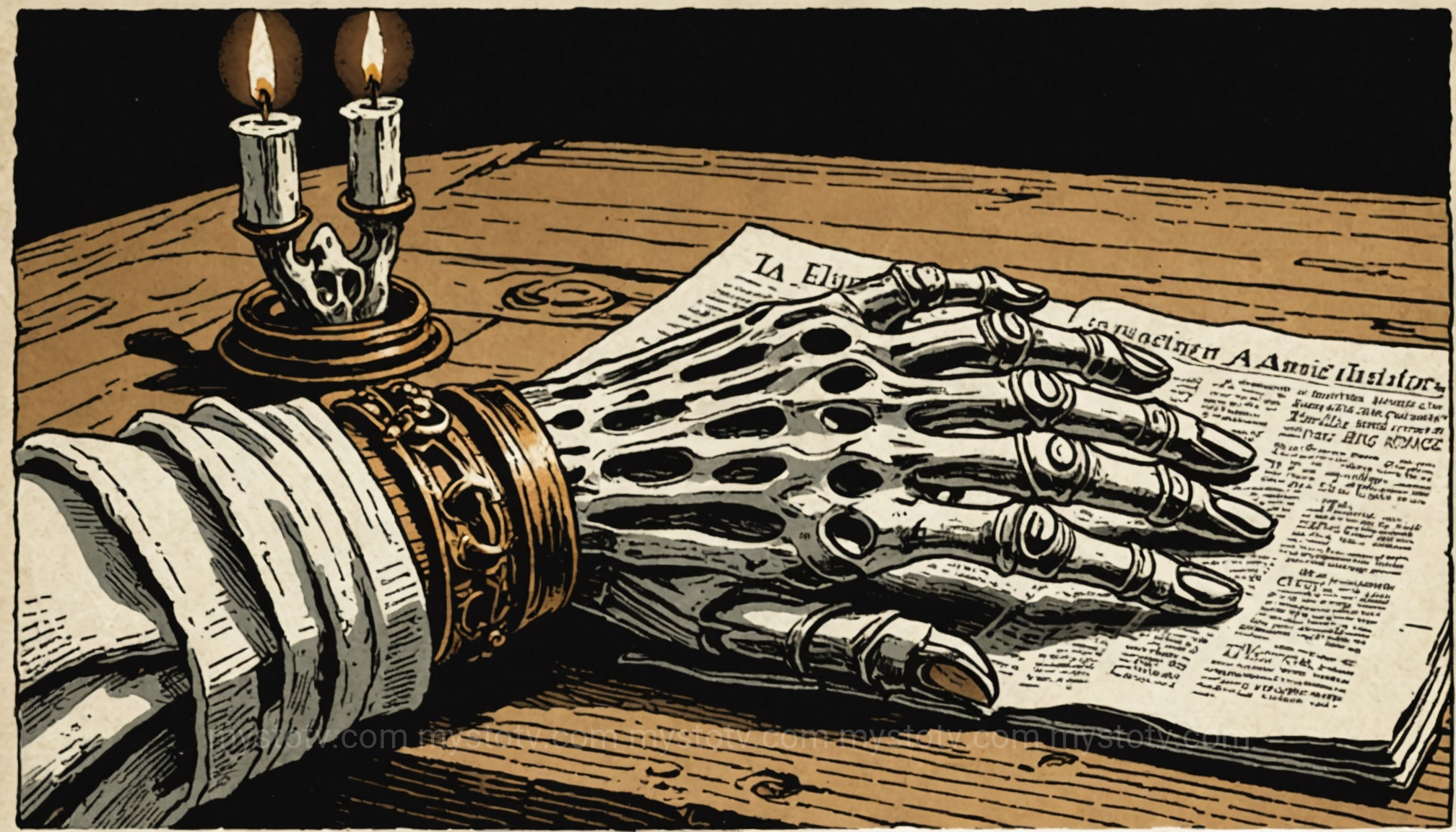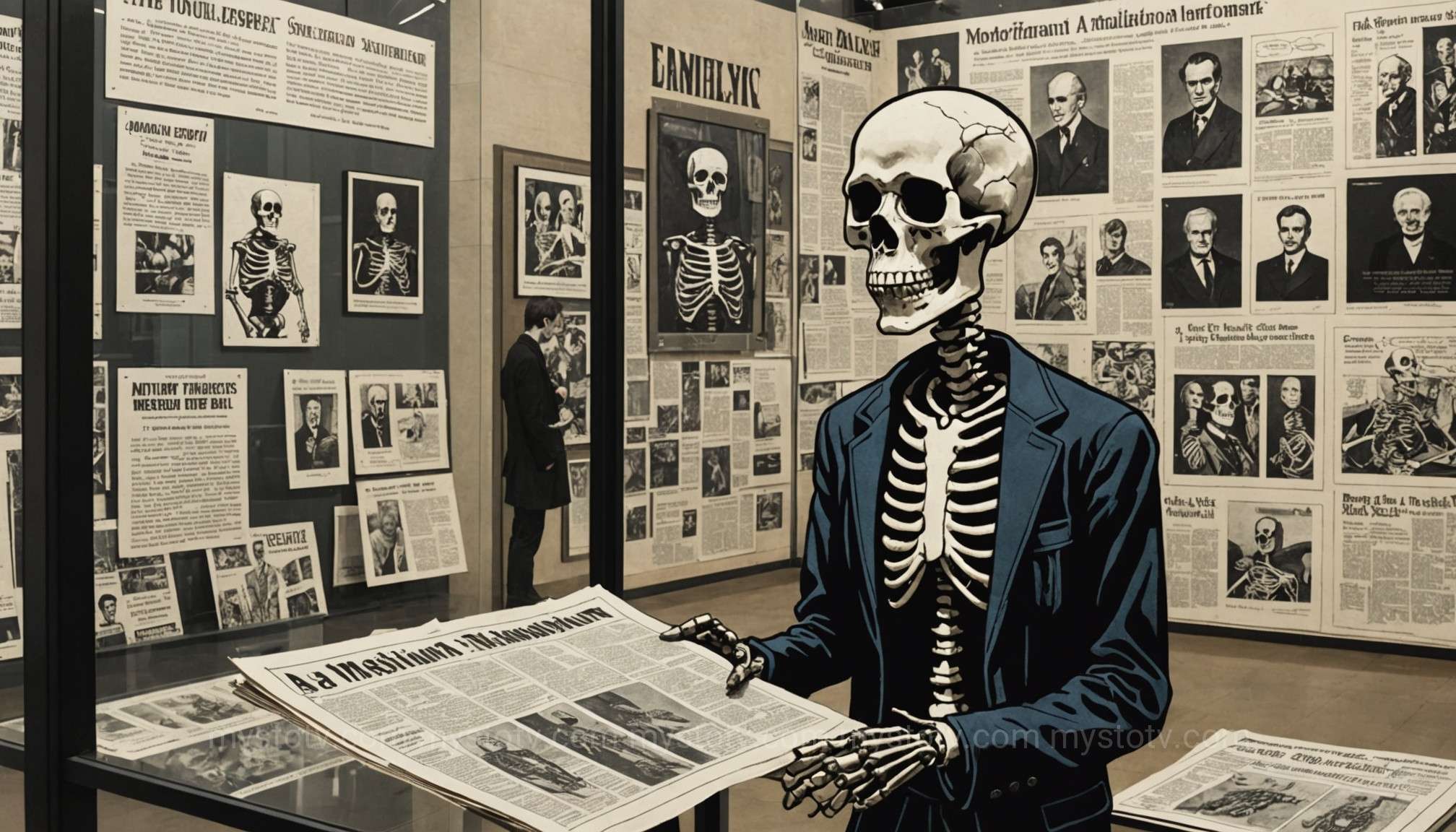I remember standing in the quiet chill of a medieval crypt beneath a European cathedral, my eyes tracing the lines of a small, macabre carving on a sarcophagus. It was a skeleton, not menacing, but almost contemplative. It struck me as odd. In my modern view, such imagery felt more at home in a horror film than a house of God. That moment sparked a deep curiosity about the complex and often contradictory history of death symbolism within faith. It led me down a fascinating rabbit hole, exploring the blurry line where devotion meets folk magic, and uncovering the intricate, often forbidden, story of the skeleton amulet, Christianity, and the ancient beliefs that refuse to be buried. This isn't just a tale of superstition; it’s a story about humanity's enduring struggle to understand mortality, and how the perception of a single object can shift from a pious reminder to a forbidden charm.
Contents
- 1 Skeletons as Symbols: Unearthing the Ancient Roots of the Skeleton Amulet and its Link to Christianity
- 2 The Memento Mori Paradox: How Views on the Skeleton Amulet and Christianity Shifted from Devotion to Damnation
- 3 Apotropaic Magic vs. Faith: Deconstructing the Forbidden Nature of the Skeleton Amulet in Christianity
- 4 Modern Interpretations: The Enduring Legacy of the Skeleton Amulet, Christianity, and Contemporary Beliefs
- 5 Frequently Asked Questions about the Skeleton Amulet and Christianity
- 6 Conclusion: The Unsettled Bones of Belief
- 7 References
Skeletons as Symbols: Unearthing the Ancient Roots of the Skeleton Amulet and its Link to Christianity

The image of the skeleton did not begin its symbolic life with the Christian Church. Long before the cross became the dominant religious icon, cultures across the ancient world imbued bones and skeletal figures with profound meaning. To understand the later, complex relationship between the skeleton amulet, Christianity, and accusations of magic, we must first dig into this deeper, pre-Christian soil. These ancient roots provided the symbolic framework that early Christians would both adopt and, eventually, condemn.
From the Nile to Rome: Death as a Guide, Not a Terror
In ancient Egypt, the skeleton was not merely a sign of death but an integral part of the cycle of life, death, and rebirth. The concept of the soul (the Ka and Ba) leaving the body and later returning required the preservation of the physical form, including the skeleton. While not typically worn as amulets in the way we might think, skeletal motifs appeared in funerary art, reminding the living of the journey ahead and the structure that awaited resurrection.
The Greco-Roman world adopted a more philosophical, and at times, celebratory view. The larva convivialis, or "skeletal guest at the feast," was a small, often articulated skeleton figure brought out during banquets. Its purpose was to remind revelers of their mortality, urging them to enjoy life while they could—a sentiment encapsulated by the phrase carpe diem ("seize the day"). This was a form of memento mori ("remember you must die") long before Christianity claimed the concept. These weren't necessarily amulets for protection, but potent philosophical tools worn or displayed to shape one's outlook on life.
Early Christian Adoption and Syncretism
As Christianity spread, it did not do so in a vacuum. It absorbed and repurposed the symbols of the cultures it converted, a process known as syncretism. Early Christians, particularly those facing persecution, lived in close proximity to death. The catacombs of Rome, filled with the bones of martyrs, became sacred spaces. In this context, the skeleton was not inherently pagan or evil; it was a symbol of the martyrs who had shed their mortal coil for their faith. It represented the promise of the resurrection—that just as Christ rose, so too would the faithful be raised from their bones on Judgment Day. This initial acceptance laid the groundwork for the complex role of the skeleton amulet in Christianity, where it was, for a time, a symbol of ultimate faith, not forbidden magic.
The Memento Mori Paradox: How Views on the Skeleton Amulet and Christianity Shifted from Devotion to Damnation

The journey of the skeleton symbol within Christianity is a fascinating paradox. What began as a solemn reminder of martyrdom and resurrection slowly morphed into something viewed with suspicion and, eventually, outright hostility. The line between a pious reminder and a magical charm became dangerously thin, transforming the perception of the skeleton amulet within Christianity from a tool of devotion into an object of damnation. This shift reflects the Church's own evolving struggle to define the boundaries of acceptable faith and stamp out perceived pagan survivals.
The Rise of Pious Memento Mori
During the High and Late Middle Ages, especially after the Black Death ravaged Europe, the theme of memento mori became deeply embedded in Christian art and devotion. The plague brought death to everyone's doorstep, regardless of status, reinforcing the idea that all are equal in the face of mortality. The Danse Macabre, or "Dance of Death," art style depicted skeletons leading popes, kings, and peasants alike in a final dance, serving as a powerful sermon on humility and the vanity of earthly life. In this environment, owning a skull, or a small skeletal carving, was not seen as sinister. It was a physical aid to prayer, prompting contemplation on the afterlife and the importance of living a righteous life. It was a direct precursor to the conceptual space that a skeleton amulet in Christianity could occupy as a devotional item.
From Contemplation to Condemnation: The Fear of Folk Magic
The paradox emerged as the institutional Church grew more powerful and sought to standardize worship and belief. Theologians began to draw a sharp line between approved sacramentals (like holy water or rosaries, which derived power from the Church's blessing) and amulets, which were believed to possess inherent power or draw on non-divine forces. A peasant wearing a skeleton charm for protection from the Evil Eye was seen as engaging in superstition, bypassing God's authority and dipping into the world of folk magic.
This fear intensified during the Reformation and Counter-Reformation periods, as both Protestants and Catholics sought to "purify" their faith. Anything that smacked of paganism or unsanctioned superstition was targeted. The skeleton amulet, once potentially a personal memento mori, was now easily conflated with necromancy and witchcraft. Its ancient, pre-Christian origins were no longer seen as a syncretic curiosity but as evidence of its demonic nature. The very thing that made it powerful in ancient cultures—its direct connection to life, death, and protective power—now made it forbidden. This shift from acceptance to fear marks a crucial turning point in the object's history.
Apotropaic Magic vs. Faith: Deconstructing the Forbidden Nature of the Skeleton Amulet in Christianity
At the heart of the "forbidden" label attached to the skeleton amulet by Christianity is a fundamental theological conflict: the clash between apotropaic magic and pure faith. Apotropaic magic, from the Greek apotropaios meaning "to turn away," is the use of objects, symbols, or rituals to ward off evil or bad luck. While many religions incorporate such practices, orthodox Christianity, particularly in its more dogmatic forms, insists on a different source of protection—God alone, a concept often related to sola fide (faith alone). This distinction is the key to understanding why an object like a skeleton amulet could become so problematic.
The Danger of a Tangible Shield

The core theological objection to an amulet is that it relocates the source of power. In Christian doctrine, a believer's protection from spiritual and physical harm comes from God, through prayer, faith, and the grace of the Holy Spirit. An amulet, by its very nature, suggests that a physical object holds inherent protective power. Wearing a skeleton charm to ward off illness or a curse implies that the charm itself is the active agent, not God. This was seen as a form of idolatry—placing faith in a created object rather than the Creator.
This is a subtle but crucial distinction. A Christian might wear a cross, but theologically, the cross is a symbol of faith in Christ's sacrifice; it is not, in itself, a magic talisman. The power comes from the faith it represents. A skeleton amulet, with its deep roots in pre-Christian folk traditions of protection, was far more likely to be viewed as a self-contained magical device, thus making its connection to skeleton amulet and Christianity a direct contradiction in terms for Church authorities.
Where Does Power Come From?
The debate ultimately boils down to a single question: where does spiritual power reside?
- Orthodox View: Power flows from God to the believer through sanctioned channels—prayer, sacraments, scripture, and the Church itself. Objects can be reminders of faith (like a rosary) but are not independent sources of power.
- Folk/Magical View: Power can be inherent in objects, symbols, words, and nature. An amulet works because of what it *is* or the forces it represents, operating according to metaphysical laws that may exist alongside or outside of the divine.
The skeleton amulet fell squarely into the second category in the eyes of the Church. It wasn't a symbol pointing to God's power over death; it was seen as an attempt to harness the power of death itself. This interpretation sealed its fate as an object of "forbidden magic," pushing it from the realm of personal devotion into the shadows of heresy and superstition.
Modern Interpretations: The Enduring Legacy of the Skeleton Amulet, Christianity, and Contemporary Beliefs

The story of the skeleton amulet and Christianity does not end in the Middle Ages. The tension between the skeleton as a symbol of death, faith, and forbidden power continues to resonate in the modern world. While the formal theological condemnations have lessened, the skeleton's symbolic weight remains potent, fragmented, and reinterpreted across various subcultures, artistic movements, and even within religious contexts themselves.
Today, the skeleton amulet is most visibly present in gothic and punk subcultures. Here, it is often worn as a symbol of rebellion against mainstream norms, an embrace of the macabre, and a modern form of memento mori. It's a statement about mortality, non-conformity, and an aesthetic appreciation for imagery that society often shuns. In this context, its "forbidden" history adds to its appeal, making it a symbol of defiance against established authority, including religious institutions.
Simultaneously, the art world and historical academia have reclaimed the skeleton from pure superstition. Vanitas paintings are studied as masterpieces of philosophical art. The Danse Macabre is analyzed for its socio-political commentary. Archaeological finds of early Christian burial sites with skeletal art are understood not as evidence of heresy, but as complex expressions of nascent faith grappling with mortality. In a museum, the skeleton amulet is no longer evidence in an inquisition but an artifact telling a human story.
Perhaps most fascinating is the syncretism seen in cultures like Mexico's Día de los Muertos (Day of the Dead). This celebration, which has deep indigenous, pre-Columbian roots, has merged with Catholic beliefs (All Saints' Day and All Souls' Day). The vibrant, celebrating skeletons (calaveras) are a world away from the grim, cautionary skeletons of medieval Europe. They represent a joyful remembrance of the dead, treating death as a natural, integrated part of life's continuum. While a cleric in 15th-century Spain would have seen this as pagan heresy, it stands today as a powerful example of how the skeleton amulet and Christianity can coexist in a culturally rich and spiritually meaningful way, proving that the meaning of a symbol is never truly fixed.
Frequently Asked Questions about the Skeleton Amulet and Christianity
The complex history of the skeleton amulet and Christianity often leads to specific questions. Here are clear, experience-based answers to some of the most common queries.
1. Was wearing a skeleton amulet always considered a sin in Christianity?
No, not always. In the very early Church (first few centuries AD), symbols were more fluid. Given the context of martyrdom and the Roman catacombs, skeletal imagery could symbolize resurrection and steadfast faith. The strong condemnation arose later, primarily in the Middle Ages, as the Church sought to eradicate folk magic and pagan survivals. The sin wasn't necessarily the image itself, but the *intent* behind wearing it: was it for pious contemplation (memento mori) or for magical protection (apotropaic magic)?
2. What is the main difference between a 'memento mori' skeleton and a 'magic' skeleton amulet?
The difference lies in perceived function and source of power. A memento mori object, like a skull on a desk, is a passive reminder. Its purpose is to spark internal contemplation and guide the user's thoughts toward God and the afterlife. A magic amulet is seen as an active agent. It is believed to possess its own power to act upon the world—to ward off evil, prevent sickness, or bring luck. Theologically, the first aids faith in God, while the second replaces faith in God with faith in an object.
3. Are there any mainstream Christian traditions that still use skeleton imagery today?
Yes, though it's nuanced. The most prominent example is the syncretism found in Mexican Catholicism with the Day of the Dead. The colorful calaveras are used to honor ancestors in a celebration that blends indigenous traditions with the Catholic feasts of All Saints' and All Souls' Day. Additionally, some ossuaries or "bone chapels" in Europe, like the Sedlec Ossuary in the Czech Republic, remain active Catholic sites, using human bones to create elaborate decorations that serve as powerful, if macabre, memento mori for visitors.
Conclusion: The Unsettled Bones of Belief
The journey of the skeleton amulet in Christianity is a powerful testament to the ever-shifting landscape of faith, culture, and fear. From a pre-Christian symbol of life's cycles to an early Christian emblem of resurrection, it transformed into a pious tool for contemplating mortality before being cast out as an instrument of forbidden magic. Its story reveals that no symbol has a single, permanent meaning. Instead, its power and perception are defined by the people who use it and the institutions that judge it.
Today, the skeleton amulet lives a thousand different lives—as a historical artifact, a counter-cultural badge, and a component of vibrant, syncretic faiths. It reminds us that the line between religion and magic, piety and superstition, is often drawn not in stone, but in the shifting sands of human history. The skeleton, in all its forms, remains an unsettling but essential icon, compelling us to look past our fear of the end and question what we truly believe in.
References
- Bynum, Caroline Walker. The Resurrection of the Body in Western Christianity, 200-1336. Columbia University Press, 1995.
- Duffy, Eamon. The Stripping of the Altars: Traditional Religion in England, c.1400-c.1580. Yale University Press, 2005. (Provides context on the Reformation's impact on religious objects).
- Kieckhefer, Richard. Magic in the Middle Ages. Cambridge University Press, 2000.
- Paxton, Frederick S. Christianizing Death: The Creation of a Ritual Process in Early Medieval Europe. Cornell University Press, 1990.
- Brand, John. Observations on Popular Antiquities: Chiefly Illustrating the Origin of Our Vulgar Customs, Ceremonies, and Superstitions. (Various editions, provides insight into folk beliefs and charms).